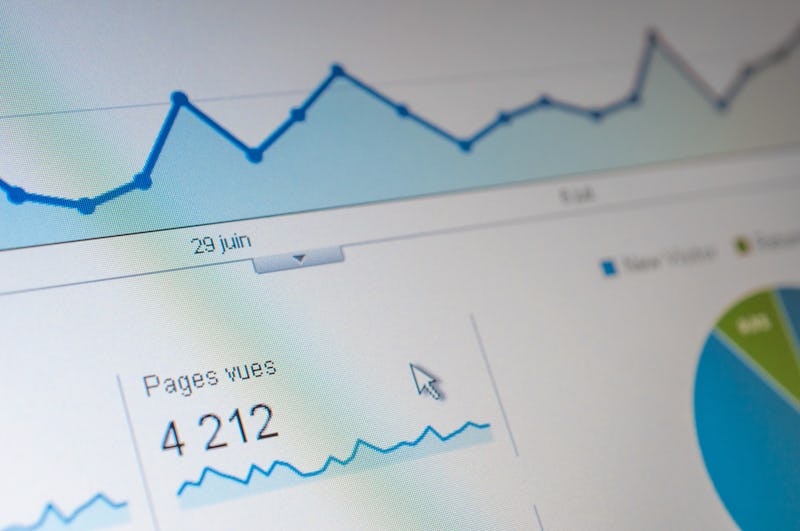CRO (conversion rate optimization) is a vital metric for standout marketers who know how to make plans and optimize for conversion. If a webpage isn't converting, you find out why and improve it, right?
While this sounds like common sense, the fact is that a whopping 68% of ecommerce brands are running without a CRO strategy.
What an opportunity! Even basic best-practices like great content, split-testing, and optimizing load times can give a website a big advantage over the majority.
And for you good marketers with big plans? Well, things change fast in ecommerce and reviewing the latest statistics now and then can inspire new ideas for making fresh ecommerce plans and taking action to optimize conversions.
Conversion rate optimization statistics
How many of these stats are top-of-mind for you digital marketers out there? And is your MarTech stack optimized for today? What about next year? Just things to keep in mind as you skim our rapid-fire list of CRO stats for 2022.
The average conversion rate across all industries is between 2 and 3%.
(Source: Wordstream)
The top 10% have conversion rates of 11% or more.
(Source: Wordstream)
Investing in CRO tools leads to an average ROI of 223%.
(Source: Outgrow)
Top-converting companies spend at least 5% of their budget on CRO.
(Source: Adobe)
The lowest conversion rate among devices is around 1.53% for mobile. For tablet, it’s 3.36%.
(Source: Statista)
The average Facebook ad conversion rate across all industries is 9.21%, but it varies considerably across industries, dropping to 3.26% for retail.
(Source: Wordstream)
A/B testing is the preferred CRO method of 56% of marketers, with companies performing testing improving their conversion rates by 50%.
(Source: Econsultancy)
Catering & Restaurant is the industry with the highest conversion rate at 18.2%, with home improvements dropping down to 7.2%.
(Source: Unbounce)
Food and beverages have the highest average ecommerce conversion rate by industry (4.95%) and sporting goods have the lowest (2.35%).
(Source: Yotpo)
Increasing your number of landing pages from 10 to 15 increases leads by 55%.
(Source: Hubspot)
Reducing the number of form fields from 11 to 4 increased conversions by more than 120%.
(Source: Unbounce)
Businesses that use marketing automation to nurture leads increase qualified leads by 451%.
(Source: Business2Community)
Videos on landing pages increase conversions by 86%.
(Source: EyeView)
Slow loading pages reduce conversions by 7%.
(Source: Neil Patel)
The first five seconds of page load time have the highest impact, with between 0-4 seconds of load time being the best for conversion rates.
(Source: Lander)
Across all industries, user-generated content boosts conversion rates by 161%.
(Source: Yotpo)
Conversion rates for CTA buttons differ with ‘Click Here’ converting better than ‘Submit’.
(Source: Unbounce)
Personalized CTAs outperform non-personalized CTAs by 42%.
(Source: Hubspot)
Emails with just one CTA increase sales by up to 1,617%.
(Source: Wordstream)
Legacy technology is cited by 25% of companies as the greatest barrier to increasing their website conversions.
(Source: 99 Firms)
Personalized emails lead to a 10% increase in conversions.
(Source: WebFX)
A personalized sales call within two days after making contact can increase conversion by over 200%.
(Source: Databox)
Between 2018 and 2020 alone, marketers’ use of AI increased by 190%.
(Source: Hubspot)
Web analytics tools are the most widely adopted tool to increase conversions (69%) compared to user experience testing (64%), personalization (61%), and content testing (57%) as part of their CRO processes.
(Source: Decibel)
Consumer goods have the highest sales close rate, followed by financial services at 18%, software/IT at 15%, and staffing and recruitment at 11%.
(Source: Hubspot)
Final thoughts on CRO and ecommerce goal setting
With one eye on increased revenue, smart marketers take CRO best-practices seriously. As you can see from the above conversion rate optimization statistics, there is a lot you can do to take control of your conversions to land qualified leads. You can perform A/B testing, increase your number of landing pages, consider implementing marketing automation, optimize page load speeds, and, as far as possible, focus on personalization. When you implement these and other CRO steps, you will be rewarded with higher numbers of qualified leads and more sales, sure proof of your success as a marketer.







